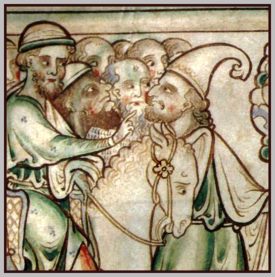 Most
articles that describe bridle rosettes attribute their emergence to the mid
to late 1800s. Re-emergence would be a better term since decorations on
horses bridles have been around for a very long time. The picture showing a
bridle rosette to the right is a graphic by Mathew Paris1 in the early 1200s.
However, this rendition is modern compared to the rosette in the sculpture
below created during the Sasanian dynasty2
in ancient Iran (224-651 CE)
Even older, figures of horses on the walls of Egyptian buildings show that
horses, used mainly by royalty and for war chariots, were highly decorated
including decorative pieces strongly suggestive of the items we call bridle
rosettes.
Most
articles that describe bridle rosettes attribute their emergence to the mid
to late 1800s. Re-emergence would be a better term since decorations on
horses bridles have been around for a very long time. The picture showing a
bridle rosette to the right is a graphic by Mathew Paris1 in the early 1200s.
However, this rendition is modern compared to the rosette in the sculpture
below created during the Sasanian dynasty2
in ancient Iran (224-651 CE)
Even older, figures of horses on the walls of Egyptian buildings show that
horses, used mainly by royalty and for war chariots, were highly decorated
including decorative pieces strongly suggestive of the items we call bridle
rosettes. 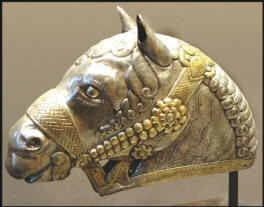 In more modern times, the rosettes became commercially popular after the
mid-1800s and continued in common use until the automobile replaced the
horse-drawn vehicles in the early 1900s. However, they are still
manufactured and used today. Sometimes mistaken for a button, bridle
rosettes were designed first and foremost as a handsome decoration. However,
in some cases they served to hold the crown piece and brow band together on
a riding or driving bridle.
In more modern times, the rosettes became commercially popular after the
mid-1800s and continued in common use until the automobile replaced the
horse-drawn vehicles in the early 1900s. However, they are still
manufactured and used today. Sometimes mistaken for a button, bridle
rosettes were designed first and foremost as a handsome decoration. However,
in some cases they served to hold the crown piece and brow band together on
a riding or driving bridle. They are most easily identified by a large rectangular shank through which the bridle strap passes to hold them in place. They have been made with a wide variety of materials including glass, leather, rubber, celluloid, jet, silver, and other metals many of which can be seen below. The most popular today are those with a domed or flat glass cover set in a metal frame. Many have paper cutouts under the glass to simulate a border and to provide the display of a picture, symbol, letter, or number. Rosettes were made in a large variety of pictorial designs and many identify a person, a family, a horse, or a story. They were also used by the Federal Calvary during the Civil War and later by certain civil mounted police. Over time, many companies used the rosettes as advertising tools . Originally, bridle rosettes were often produced in mirror image pairs but finding such a pair in nice shape today has become difficult.
The Blue Book classifies bridle rosettes into 2 classes, 1-1 Face Designs (pictorial, patterns, symbols); and 1-2 Specific design features. Class 1-2 allows and supports writing awards that focus on specific characteristics such as material types, construction techniques, decorative finish (DF), other material embellishment (OME) and pictorials. See the footnote at the end of Div IV listing in the Blue Book. The examples below illustrate many of the possibilities.
| 1-1 Face Designs (pictorial, patterns, symbols) | |||
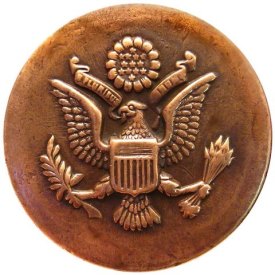 1-1 Face Design - Pictorial Military - Brass (1-1/4") |
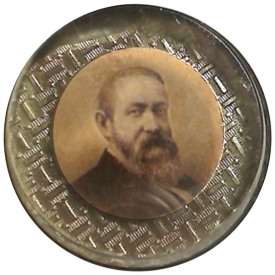 1-1 Face Design - Pictorial Political - Litho (1-1/2") |
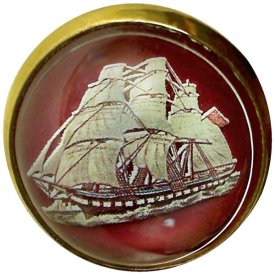 1-1 Face Design - Pictorial Domed Glass (1-1/2") |
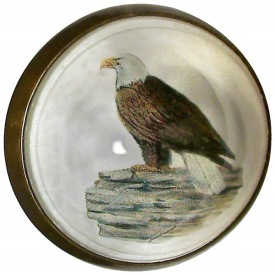 1-1 Face Design - Pictorial Domed Glass (1-1/2") |
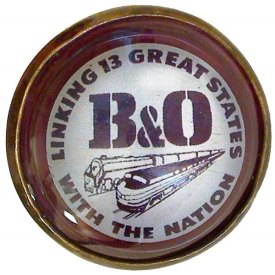 1-1 Face Design - Pictorial Advertising (1-1/2") |
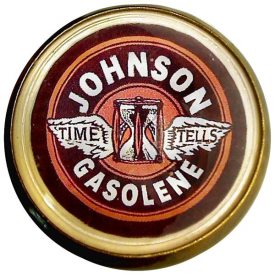 1-1 Face Design -Pictorial Advertising (1-1/2") |
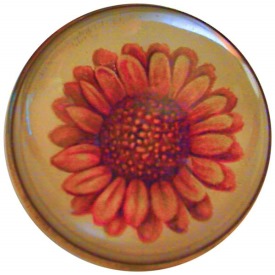 1-1 Face Design - Pictorial (1-1/2") |
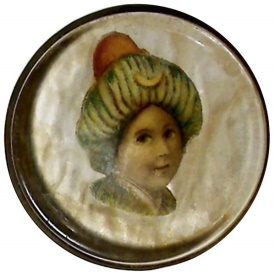 1-1 Face Design - Pictorial Litho (1-1/2") |
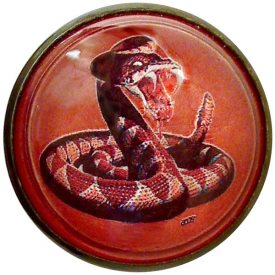 1-1 Face Design - Pictorial (1-1/2") |
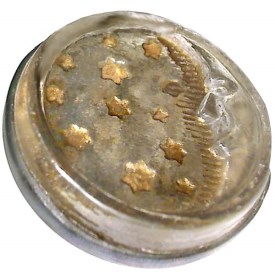 1-1 Face Design - Pictorial (1-1/2") Glass in Metal - Molded Face |
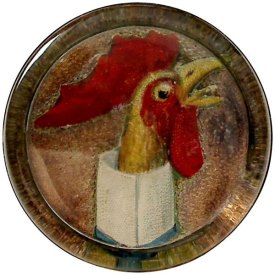 1-1 Face Design - Pictorial (1-1/2") |
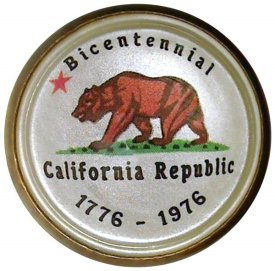 1-1 Face Design - Pictorial Commemorative (1-1/2") |
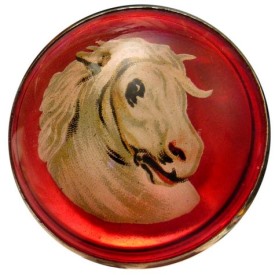 1-1 Face Design - Pictorial Domed Glass (1-1/4") |
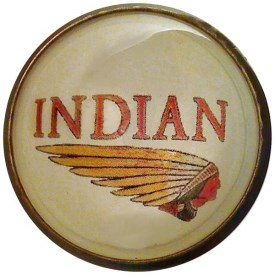 1-1 Face Design - Pictorial Advertising (1-1/2") |
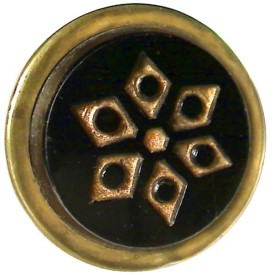 1-1 Face Design - Pattern Black Glass (1-1/4") |
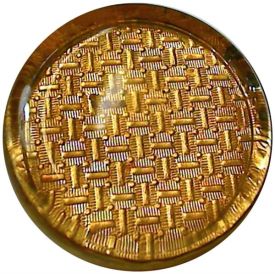 1-1 Face Design - Pattern Wallpaper (1-1/2") |
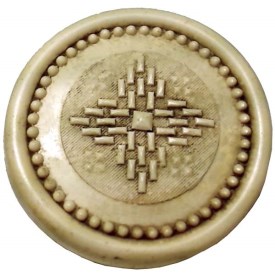 1-1 Face Design - Pattern Vegetable Ivory (1-1/2") |
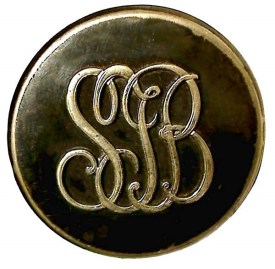 1-1 Face Design - Symbol Monogram (1-1/2") |
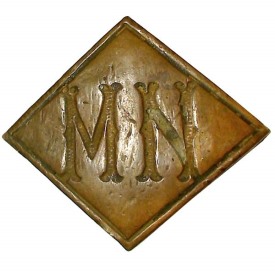 1-1 Face Design - Symbol Lead (3" x 2") |
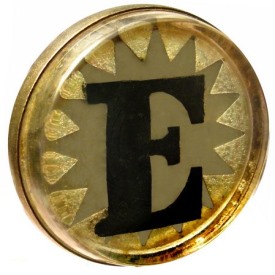 1-1 Face Design - Symbol Flat Glass (1-1/4") |
| 1-2 Specific Design Features - Examples of Materials | |||
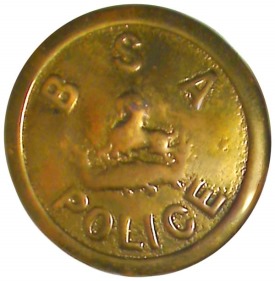 1-2 Materials - Brass Verbal - Police (1-1/2") |
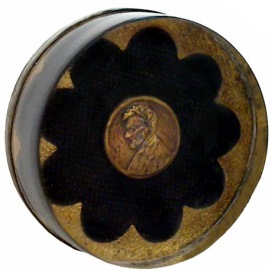 1-2 Materials - Glass in Metal Flat Glass (1-1/4") |
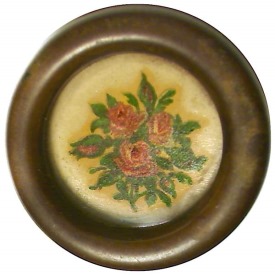 1-2 Materials - Bakelite DUG (1-1/2") |
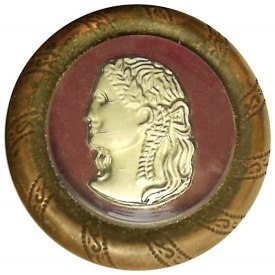 1-2 Materials - Glass in Metal DUG Sulfide (1-1/2") |
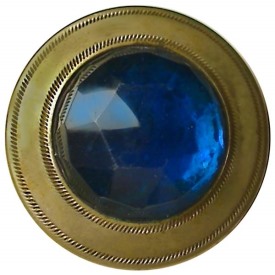 1-2 Materials - Glass in Metal (1-1/2") |
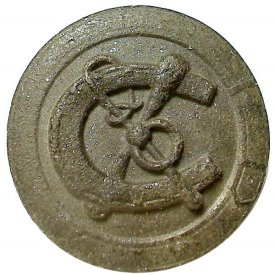 1-2 Materials - Composition (1-1/2") |
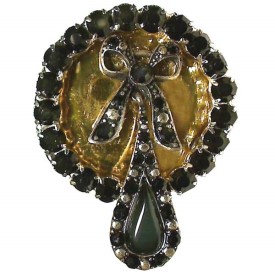 1-2 Materials - Glass in Metal Black Glass (2") |
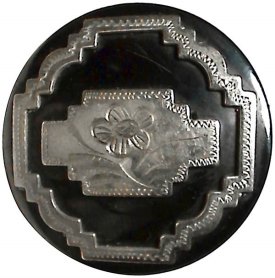 1-2 Materials - Silver Black Paint DF (1-1/2") |
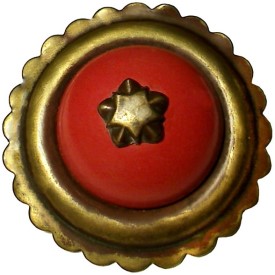 1-2 Materials - Ceramic Brass OME (2-3/4") |
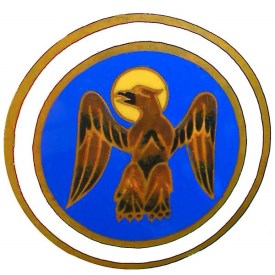 1-2 Materials - Enamel (2") |
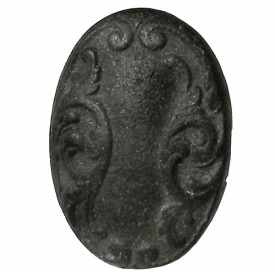 1-2 Materials - Jet (1-5/8" x 5/8") |
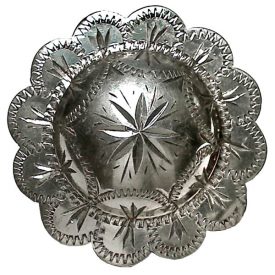 1-2 Materials - Sterling Silver (1-1/2") |
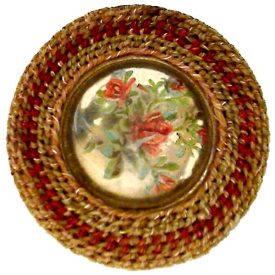 1-2 Materials - Fabric DUG (1-1/2") Horsehair |
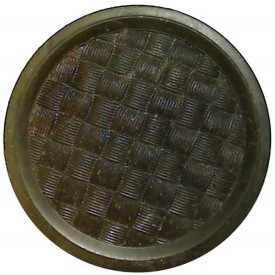 1-2 Materials - Rubber Goodyear back mark (1-1/2") |
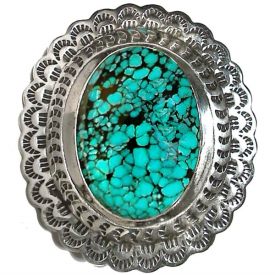 1-2 Materials - Gemstone MIM - Turquoise (1-1/2") |
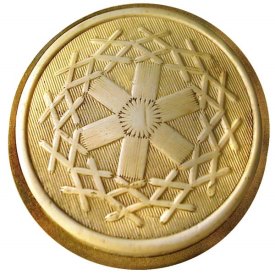 1-2 Materials - French Ivory (1-1/2") |
|
Credits and References Credits: 1. Westminster Psalter, by Matthew of Paris, c. 1250 - http://ilaria.veltri.tripod.com/tack.html#bridles. 2. Circle of Ancient Iranian Studies - http://www.cais-soas.com Acknowledgements: Special Thanks to Ron Thomas who provided a number of references cited and made his collection of bridle rosettes available for the majority of the images shown on these pages. Others who contributed reviews, comments and images included Judy Schwenk, June Chapman, Barbara Barrans, Pat Koehler, Debra Wisniewski, Jane Perry, Lou Yeargain, Ronnie Wexler, and Sally Gibson. References: (1) Bridle Rosettes by Joseph W. Anderson - Just Buttons, March 1953 (2) Bridle Buttons by Dorothy Foster Brown - Hobbies, August 1978 (3) Bridle Rosettes by Louann Chaudier - Western Horseman, August 1997 (4) Bridle Rosettes by Dr. Ralph Merkle - Spinning Wheel, Jan/Feb 1963 (5) Rosettes by Charles Nash - North/South Civil War Traders, Vol. XXVI (date unknown) (6) Bridle Rosettes by Clara Nisbet - Spinning Wheel, May 1964 (7) Bridle Rosettes by Thelma Shull - Hobbies, April 1943 (8) Horse Bridle Rosettes by Paul S. Smith - Just Buttons, Feb 1958 (9) Bridle Rosettes by Ruth Ann White - Missouri State Button Society Bulletin, Winter/January 2009 (Volume 61 Number 1) (10) National Button Society Blue Book, 2013 - 2017, Official NBS Classification and Competition Guidelines Current |
|||